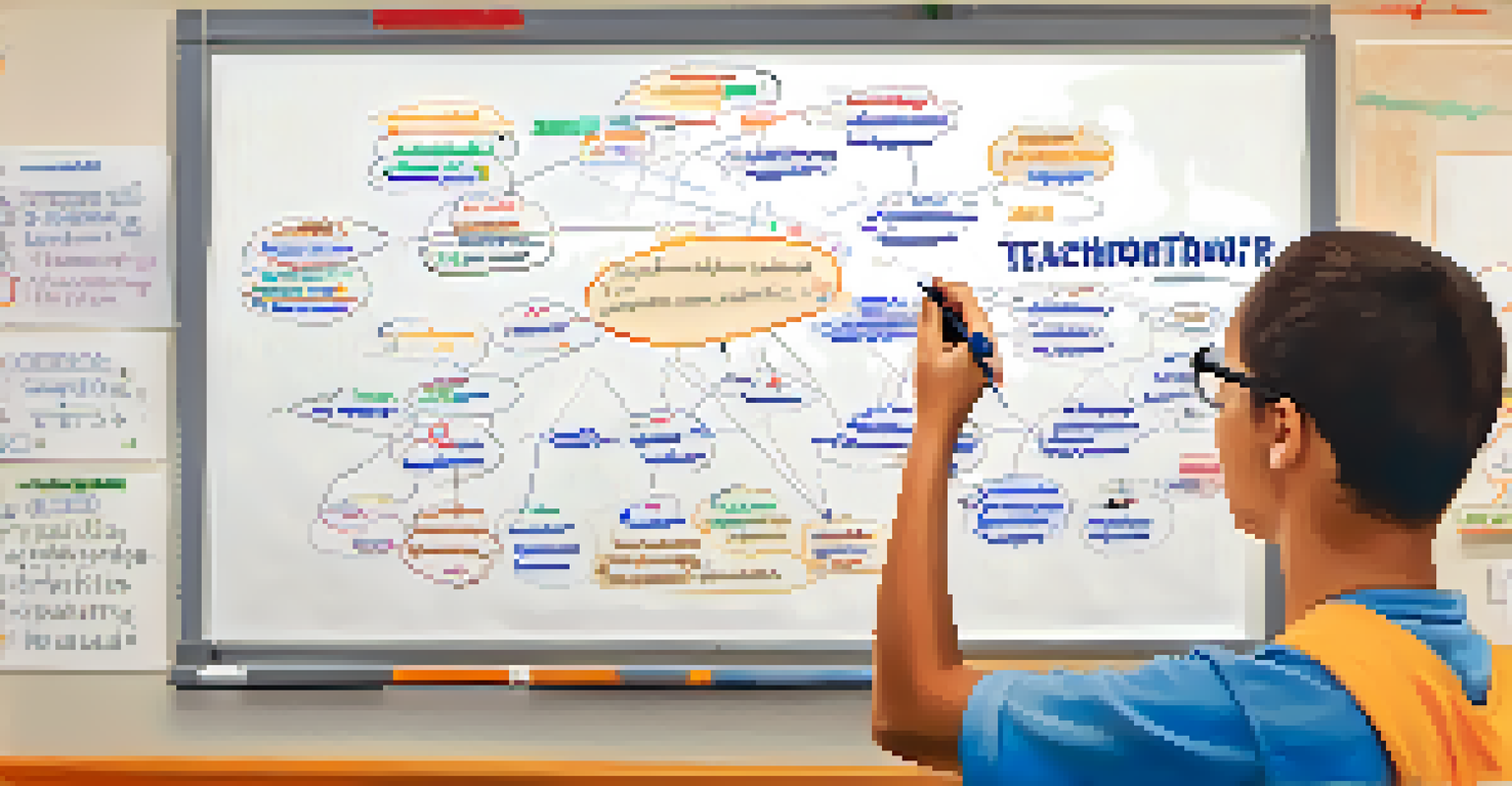Behaviorist Learning Theory and Its Impact on Curriculum Design

Understanding Behaviorist Learning Theory Basics
Behaviorist learning theory primarily focuses on observable behaviors and the ways they're learned. It suggests that all behaviors are acquired through conditioning, which can be either classical or operant. This means that learning occurs as a response to stimuli, making it essential to understand how reinforcement and punishment influence behavior.
Tell me and I forget, teach me and I remember, involve me and I learn.
For example, a child might learn to raise their hand in class because they receive praise from the teacher when they do so. This positive reinforcement encourages the behavior to be repeated in the future. Conversely, if a student is reprimanded for talking out of turn, they may learn to avoid that behavior due to negative reinforcement.
Understanding these principles allows educators to design effective learning experiences. By applying behaviorist strategies, teachers can create a structured environment where positive behaviors are encouraged, and negative behaviors are minimized.
Key Principles of Behaviorism in Education
Behaviorism is grounded in several key principles that guide its application in education. These include reinforcement, punishment, and conditioning, which help shape students' learning experiences. Reinforcement, whether positive or negative, plays a crucial role in encouraging desired behaviors.

For instance, a teacher might implement a reward system where students earn points for completing assignments on time. This creates a motivating environment, aligning well with the behaviorist approach. On the other hand, punishment can deter unwanted behaviors, such as disruptive talking during lessons.
Behaviorism Shapes Learning Behaviors
Behaviorist learning theory emphasizes that behaviors are learned through conditioning, with reinforcement playing a key role in encouraging positive actions.
By leveraging these principles, educators can create a more effective learning atmosphere. The focus remains on measurable outcomes, ensuring that both teachers and students can track progress and adjust strategies as needed.
The Role of Reinforcement in Curriculum Design
Reinforcement is a cornerstone of behaviorist learning theory, significantly impacting how curricula are designed. When creating a curriculum, educators can incorporate reinforcement strategies to motivate students. This could include setting specific goals and offering rewards for achieving them, like extra credit or praise.
The only real mistake is the one from which we learn nothing.
For example, a math curriculum might include a gamified element where students earn badges for mastering certain skills. This not only makes learning fun but also encourages consistent engagement. The anticipation of rewards can lead to improved focus and retention of information.
Ultimately, the effective use of reinforcement within curriculum design helps to create a positive learning environment. It fosters a sense of achievement and encourages students to strive for success, which is vital for their academic growth.
Incorporating Behaviorist Strategies into Lesson Plans
Incorporating behaviorist strategies into lesson plans can enhance student engagement and learning outcomes. Teachers can structure their lessons to include clear objectives that outline expected behaviors and outcomes. This clarity helps students understand what is required of them and what they can earn for their efforts.
For example, a science lesson might start with a demonstration followed by a hands-on activity where students can earn points for participation. This immediate reinforcement of positive behaviors encourages students to actively engage in the learning process. Additionally, providing feedback after each activity helps reinforce the desired behaviors further.
Reinforcement Drives Curriculum Design
Incorporating reinforcement strategies in curriculum design motivates students and fosters a positive learning environment.
By actively integrating these strategies, educators can create a dynamic learning environment. Students are more likely to participate and succeed when they understand the connection between their actions and the rewards they receive.
Challenges of Applying Behaviorist Theory
While behaviorist learning theory offers valuable insights, it is not without its challenges. One major concern is that it can sometimes oversimplify the learning process by focusing solely on observable behaviors. This may neglect important cognitive and emotional aspects of learning, such as critical thinking and creativity.
For instance, a curriculum heavily reliant on rote memorization and rewards may not foster deeper understanding or independent thought. Students might excel at completing tasks for points but struggle with applying knowledge in real-world situations. This limitation highlights the need for a balanced approach to education.
Educators must be mindful of these challenges and consider integrating other learning theories. Combining behaviorism with cognitive and constructivist approaches can create a more holistic learning experience that nurtures a variety of skills.
The Impact of Behaviorism on Modern Curriculum Trends
Behaviorist principles have significantly influenced modern educational trends, particularly in standardized testing and skill-based assessments. These practices focus on measuring specific outcomes and observable behaviors, making them easier to evaluate. As a result, many curricula are designed with an emphasis on quantifiable results.
For example, many schools utilize standardized tests to assess student learning and school performance. This trend reflects behaviorist values, emphasizing measurable behaviors over subjective evaluations. While this approach can drive accountability, it can also lead to a narrow focus on test preparation rather than fostering a well-rounded education.
Need for a Balanced Educational Approach
While behaviorism offers valuable insights, integrating it with cognitive and constructivist theories can create a more holistic learning experience.
Despite these implications, behaviorism continues to shape curriculum design by promoting clear learning objectives and assessment strategies. Educators must navigate these trends thoughtfully to ensure that they support comprehensive learning rather than merely teaching to the test.
Future Directions: Blending Behaviorism with Other Theories
As education evolves, there is a growing recognition of the need to blend behaviorist approaches with other learning theories. Constructivist and cognitive theories emphasize the importance of understanding, problem-solving, and critical thinking, which are essential for preparing students for the complexities of the modern world. By integrating these approaches, educators can create more dynamic and engaging learning experiences.
For instance, a blended curriculum might focus on both skill acquisition through practice and exploration of concepts through hands-on projects. This combination allows students to see the relevance of their learning while also developing essential skills. It encourages a deeper understanding of content and fosters a love for learning.

Looking ahead, the challenge for educators will be to find a balance that leverages the strengths of behaviorism while also nurturing creativity and critical thinking. By doing so, they can prepare students for a world that values adaptability and innovation.